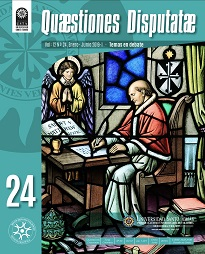Reading comprehension and the world around me
Main Article Content
Abstract
This article evidences the project carried out to strengthen reading comprehension through the application of seven research workshops based on theories related to reading, reading comprehension, artistic expressions, cultural identity, multiple intelligences, context and sociocultural theory. These theories seek to exploit the information about the environment that serves as a means for the development of this innovative didactic strategy that contributes to the improvement of educational processes of the eighth grade in the José Miguel Silva Plazas Technical Institute in the rural area of the Municipality of Duitama, Boyacá. By implementing the strategy, there was evident progress in some students regarding their role as participants of their cultural context. Their attitude towards reading comprehension was more critical, reflective, evaluative and creative; Students’ direct experiences with their environment, enhance learning processes, making this a significant process that enriches their integral formation.
Article Details
How to Cite
Medina-Higuera, S. L., Rodríguez-Corredor, L. D., & Arciniegas-Rodríguez, W. (2019). Reading comprehension and the world around me. Quaestiones Disputatae: Temas En Debate, 12(24), 71-83. Retrieved from http://revistas.ustatunja.edu.co/index.php/qdisputatae/article/view/1812
Section
Artículos Vol. 12
De acuerdo a la Licencia Creative Commons Atribución-No Comercial-Sin Derivar 4.0 Internacional, se autoriza leer, descargar, copiar, distribuir, imprimir, buscar o enlazar los textos completos de estos artículos, siempre y cuando se conceda el crédito a los autores de los textos y a la Revista Quaestiones Disputatae: temas en debate, como fuente de publicación original. No se permite el uso comercial de copia o distribución de contenidos, así como tampoco la adaptación, derivación o transformación alguna de estos sin la autorización previa de los autores y de la dirección de Quaestiones Disputatae: temas en debate.

Esta obra está bajo una licencia de Creative Commons Reconocimiento-NoComercial-SinObraDerivada 4.0 Internacional.
References
Ardila-Muñoz J. Y. (2016). Movilidad estudiantil.; Entre la intensión de integración de la educación superior y su mercantilización. Questiones Disputatae: Temas en debate 9(18), 89-109.
Bruer, J. (1995). Escuelas para pensar, Una ciencia en el aprendizaje en el aula. (M. d. Ciencia, Ed.) Madrid, Barcelona: Paidos Iberica.
Bodrova & Leong (2004). Herramientas de la mente: El Aprendizaje en la infancia desde la perspectiva.de Vigotsky. México: Pearson.
Cassany, D. (1999). Cassany Daniel. Aproximaciones a la lectura crítica: teoría, ejemplos y reflexiones. Barcelona.
Castro, G. (s.f.). Jovenes, La Identidad social y la Construcción de la memoria. Recuperado el 12 de 05 de 2017, de Ultima decada: http;//dx.doi.org/10.4067/s0718- 2236200700010002.
Diaz, Barriga., F., y HERNANDEZ, G. (1999). Estrategias docentes para un aprendizaje significativo. MÉXICO: McGraw Hill.
Eco, H. (1985). Obra Abierta (primera ed.). Barcelona: Ariel.
Elliot. Jhon, (2005) El cambio educativo desde la investigación acción. Madrid. Ediciones Morata SL. P.79).
Jurado Valencia, F. (1995). Lectura, Incertidumbre, Escritura . En En los procesos de la Lectura. Bogota: Presencia. (p.46)
Solé, I. (1989). Estrategias de lectura leer, Comprender.
Solé, I. (1992). Estrategias de lectura leer, Comprender y Aprender.
Stone W., M. (1999). La enseñanza para la comprensión. Vinculación entre la Investigación y la Practica. Argentina: Paidós.
Zuleta, S. (1995). Conferencia sobre la lectura. En los procesos de lectura. Bogota: Presencia. (p.15).
Bruer, J. (1995). Escuelas para pensar, Una ciencia en el aprendizaje en el aula. (M. d. Ciencia, Ed.) Madrid, Barcelona: Paidos Iberica.
Bodrova & Leong (2004). Herramientas de la mente: El Aprendizaje en la infancia desde la perspectiva.de Vigotsky. México: Pearson.
Cassany, D. (1999). Cassany Daniel. Aproximaciones a la lectura crítica: teoría, ejemplos y reflexiones. Barcelona.
Castro, G. (s.f.). Jovenes, La Identidad social y la Construcción de la memoria. Recuperado el 12 de 05 de 2017, de Ultima decada: http;//dx.doi.org/10.4067/s0718- 2236200700010002.
Diaz, Barriga., F., y HERNANDEZ, G. (1999). Estrategias docentes para un aprendizaje significativo. MÉXICO: McGraw Hill.
Eco, H. (1985). Obra Abierta (primera ed.). Barcelona: Ariel.
Elliot. Jhon, (2005) El cambio educativo desde la investigación acción. Madrid. Ediciones Morata SL. P.79).
Jurado Valencia, F. (1995). Lectura, Incertidumbre, Escritura . En En los procesos de la Lectura. Bogota: Presencia. (p.46)
Solé, I. (1989). Estrategias de lectura leer, Comprender.
Solé, I. (1992). Estrategias de lectura leer, Comprender y Aprender.
Stone W., M. (1999). La enseñanza para la comprensión. Vinculación entre la Investigación y la Practica. Argentina: Paidós.
Zuleta, S. (1995). Conferencia sobre la lectura. En los procesos de lectura. Bogota: Presencia. (p.15).

